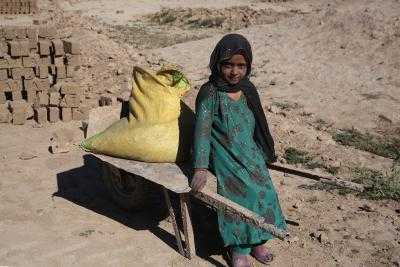Islamabad, Oct 26 (IANS) As many as 1.3 million children aged between five and 17 years are trapped in child labour in Pakistan's Sindh province, with 65 per cent of them compelled to work in the agriculture sector, local media reported, quoting a government survey.
Notably, Pakistan's Labour Department has launched the Sindh Child Labour Survey 2023-2024 in collaboration with UNICEF.
According to the survey, around two-thirds of 1.3 million children were engaged in the agriculture sector, followed by 12.4 per cent in manufacturing, while 10.8 per cent in wholesale/retail trade, a report published on the website of Pakistan daily Dawn said.
The first survey conducted in nearly 30 years has provided evidence to implement stronger policies for ending child labour, revealing details regarding the educational status, living conditions and work responsibilities of children in 29 districts of Sindh province.
According to the survey, the number of children engaged in work in the province has reduced by nearly 50 per cent since the survey was conducted in 1996, when it stood at 20.6 per cent. The survey found that 10.3 per cent of children aged between five-17 years were involved in child labour, which comprised 13.7 per cent of boys and 6.6 per cent of girls.
It revealed that 44.3 per cent of parents let their children work so that they could increase family income, while 43.5 per cent of those caught in child labour reported fatigue or injury from work-related tasks.
According to the survey, child labour was highest in Sujawal (35.1 per cent) and Tharparkar (25.6 per cent), while Malir (2.7 per cent) and Karachi South (3 per cent) reported less number of cases.
The survey revealed that 50.4 per cent of children involved in work aged between 10-17 years are subjected to hazardous conditions, including carrying heavy loads (29.8 per cent), facing extreme temperatures (28.1 per cent), and workplace abuse (17.5 per cent).
It found that only 41.2 per cent of children caught in the labour studied in schools compared to 69.9 per cent of children who were not working. The children going to schools witness a decline with age, as only 29.1 per cent of working adolescents aged between 14-17 years study in schools.
The survey revealed that 33.7 per cent of the poorest households have a child involved in labour, in comparison to 3.8 among the wealthiest households. As per the survey, families who receive Benazir Income Support Programme (BISP) support or are facing economic issues have higher child labour rates.
During the launch of the survey, Labour Secretary Asadullah Abro said the survey's findings were a stark reminder of the work they need to do in future.
He expressed the provincial government's commitment to strengthening the implementation of the Sindh Prohibition of Employment of Children Act, 2017 and making policies that address the root causes of this issue.
--IANS
int/akl/svn
You may also like

'I won lottery but it's ruined everything and wish I could return to old life'

Wanted To Bat As Deep As Possible, Says Rohit After Hitting Century In Sydney

The beautiful UK market town that's frozen in time and full of independent shops

ASEAN-India Dialogue Relations remain a force for stability, says Malaysian PM

Strong domestic demand to keep India's growth steady in 2nd half of FY26: Report







